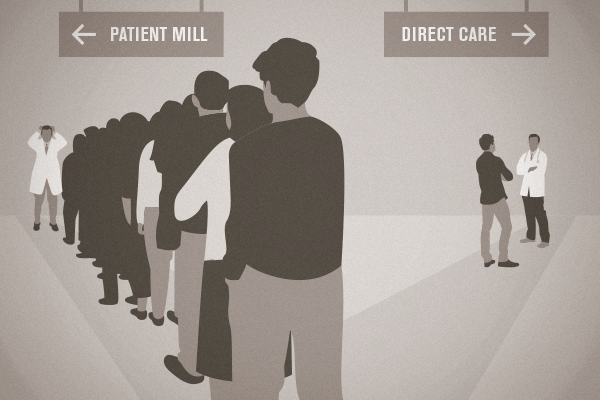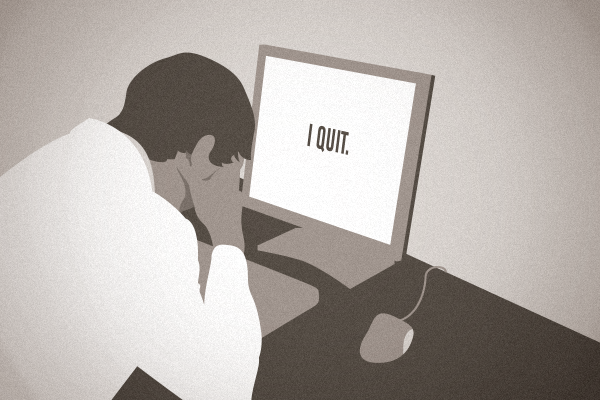In case you’re wondering, here’s the list of prescription dispensing laws by state. The rules vary, but only four states have banned dispensing outright — Montana, Texas, Utah and New York. We’ve extolled the benefits of dispensing meds for your direct care patients. First off, it gives your practice a kind of Costco-esque appeal. Now, the $50 monthly fee is giving them access to seriously discounted meds. We’re talking penny on the dollar in certain cases. Secondly, it adds a convenience factor. It’s one more thing for a patient to worry about when they see you and then have to go wait for a prescription. And it’s one more thing for you to do, either calling in or faxing over the order (or handing a piece of paper to your patient to deal with). But when you can dispense yourself, the visit becomes a very complete experience — a personal one, and a satisfying one.
Author Archives: AtlasMD
Your Patients Want To Hear From You
Finally, some good news in the healthcare realm — this report from Mobi Health News outlines the extensive results of a survey related to digital communications. This section is most telling:
“Asked to list ‘most welcomed messages,’ respondents named three health-related messages. Sixty-nine percent welcomed a reminder about an upcoming appointment or vaccination, 57 percent mentioned a notice to reorder or pick up a prescription, and 39 percent would be happy with a message reminding them to schedule an appointment.”
And The Survey Says… Doctors Are Resistant To The Affordable Care Act
According to a new survey reported on by the New York Post, “New York doctors are treating Obamacare like the plague.” The poll surveyed 409 physicians and was conducted by the New York State Medical Society. The results were ghastly. Here are the highlights:
- 44 percent of MDs said they are not participating in the nation’s new healthcare plan
- 33 percent of MDs are still undecided about whether or not to become Obamacare providers
- Only 23 percent said they’re taking patients who signed up through health exchanges
Red Tape Puts Insured Californians in a Bind
Fox News conducted a hard interview with a doctor in California. All things considered, we’re aware of the network’s general political leanings, and we’re not politicians at Atlas MD (we’re doctors). However, it’s very difficult to argue with the fact that paying subscribers have been kicked off of existing plans in California, and forced into Obamacare programs. Regardless of whether one plan is better than the other, one thing has been eliminated, and that’s the power of choice.
Had we been invited to the program we might have added that the insurance doesn’t guarantee quality care. Quality care is something that takes time and experience. The more fee-for-service doctors deal with insurance to get paid, the less medicine they actually practice. In a perfect world, there’d be MORE doctors, not more red tape. Ironically, as we add more bureaucratic influence, albeit well intentioned, we run the risk of running doctors out of medicine entirely.
Sadly, the government imagines medicine like this — insure everyone, problem solved. But what happens when all the doctors are occupied, and there’s no one to see all these insured patients?

Prepare Yourself for the Fork in the Road
We found a great blog post from The Happy MD that clarifies a schism that’s likely to develop here in the American healthcare system. With an influx of patients gaining insurance through Obamacare (assuming those exchange websites finally work), primary care docs have essentially two directions they will be pushed in:
- One group of docs will be part of the patient mill, who due to the inherent volume of patients coming through a clinic will only see the very sick; here the doctor will spend a majority of time in a management position, overseeing nurses and physician assistants who actually interact with patients.
- Another group of docs will be part of the concierge medicine/direct care movement, and will see all of their patients for longer durations; here the doctor will free up this time by removing the red tape and operating their practice with limited assistance.
STREAM: Atlas MD on The Sean Hannity Show
In case you missed it, we were invited back as guests on The Sean Hannity Show last Friday. We’re honored to be recognized as a solution to an overwhelming healthcare debacle. Afterwards, we were flooded with emails from people interested in learning more about our model and where they can find a direct care clinic in their own community.
As we mentioned on the program, you can visit IWantDirectCare.com to express your interest in joining a direct care clinic, or, if you’re a direct care doctor, where your clinic is located. And wouldn’t you know, the map’s filling up fast! We think this disproves a direct care criticism, that healthy people subscribing to a direct clinic is like paying for an unused gym membership. We’re wondering, where do these arguments originate? Our patients constantly praise the services we provide and our accessibility. And the question we keep hearing from people who first come across our business is, Where can I find my own direct care doctor? We’re hoping that within the next few years, patients can find direct care almost anywhere. Really, it’s up to the doctors to meet the demand and interest that’s growing as we speak.
As always, thanks to everyone who tuned in to The Sean Hannity Show on Friday, and to those who spread the word on social media. It may not seem like much, but every patient who demands affordable primary care makes direct care more viable for the doctors who want to provide it.
Research Shows Top 10 States And Top 25 Cities To Practice Insurance-Free Medicine
Are you curious if your state or city made one of the lists? Keep in mind, we’re having a great time practicing direct care here in Wichita, KS, and get this–we didn’t make either one! On top of that, not all of these states are eligible to dispense prescriptions (New York, Montana, Texas, and Utah prohibit it). In our experience, the real value in running a direct practice comes from offering wholesale prescription discounts. Over time the savings add up, especially for patients with chronic conditions (diabetes, thyroid disease, asthma, migraines, etc.) where it becomes cheaper to subscribe to your clinic and stop using insurance to pay for prescriptions.
Given these facts, we’re not treating this as the ultimatum for who or where one should or shouldn’t open a direct care clinic. However, the research brings up some good reminders. According to Dr. Chris Ewin, Founder and physician at 121MD in Fort Worth, TX:
“Direct practices should be successful in most cities and states where there is an inadequate supply of primary care physicians.” He adds, “… Most important, a physician needs to have social skills to sell him/herself and their new practice model to their patients and their community.”
Health Care Exchange Website Builders In The Hot Seat
USA Today reports from Washington that many of the problems that have plagued the HealthCare.gov website stemmed from high demand for health insurance coupled with confusion between contractors. So an official with a top government contractor will say in prepared testimony to a House panel on Thursday.

A Burnt-Out Doctor Decides To Quit
Diane W. Shannon, M.D., MPH, is now solely a freelance writer. That’s because primary care burned her out of practicing medicine entirely. She’s not burnt out on the industry, though, instead focusing on what she calls “performance improvement in health care.”
Dr. Shannon is exactly the doctor we refer to when critics mention that direct care might exacerbate a doctor shortage. To reiterate, every doctor in America doesn’t get to cut the red tape and instantaneously practice insurance-free medicine. No, direct care is about doctors cooperating collectively and acting independently to circumvent the administrative forces that swallow doc’s time, stress them out, and prohibit them from forming strong relationships with patients.
